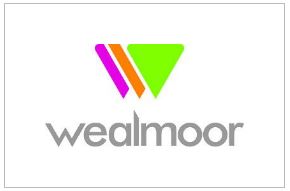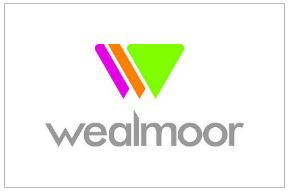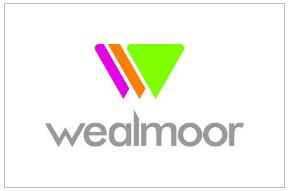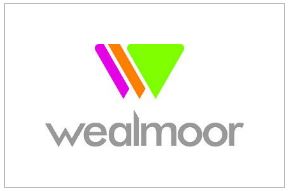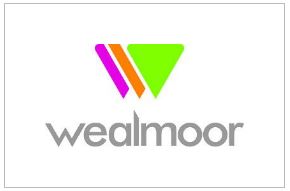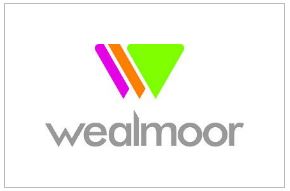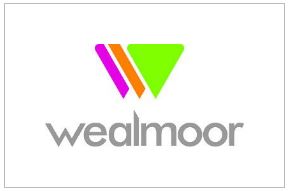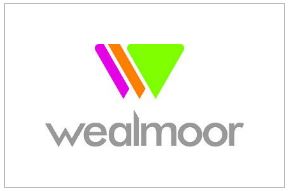Title Page
-
Conducted on
-
Prepared by
-
Location
4.1 External Standards
-
4.1.1 Consideration shall be given to local activities and the site environment, which may have an adverse impact on finished product integrity, and measures shall be taken to prevent contamination. Where measures have been put into place to protect the site (from potential contaminants, flooding etc.), they shall be reviewed in response to any changes.
-
4.1.2 The external areas shall be maintained in good order. Where grassed or planted areas are located near buildings, they shall be regularly tended and well maintained. External traffic routes under site control shall be suitably surfaced and maintained in good repair to avoid contamination of the product
-
4.1.3 The building fabric shall be maintained to minimise potential for product contamination (e.g. elimination of bird roosting sites, sealing gaps around pipes to prevent pest entry, ingress of water and other contaminants).
4.2 Security
-
4.2.1 The company shall undertake a documented risk assessment (threat assessment) of the potential risks to products from any deliberate attempt to inflict contamination or damage. This threat assessment shall include both internal and external threats.<br>The output from this assessment shall be a documented threat assessment plan. This plan shall be kept under review to reflect changing circumstances and market intelligence. <br>It shall be reviewed at least annually and whenever:<br>- A new risk emerges (e.g. a new threat is publicised or identified)<br>An incident occurs, where product security or food safety is implicated<br>
-
4.2.2 Where raw materials or products are identified to be particularly at risk, the threat assessment plan shall include controls to mitigate these risks. Where prevention is not sufficient or possible, systems shall be in place to identify any tampering.<br>These controls shall be monitored , the results documented, and the controls reviewed at least annually.<br> <br>
-
4.2.3 Areas where a significant risk is identified shall be defined, monitored and controlled. These shall include external storage and intake points for products and raw materials (including packaging).<br>Policies and systems shall be in place to ensure that only authorised personnel have access to production and storage areas, and that access to the site by employees, contractors and visitors is controlled. <br>A visitor recording system shall be in place. Staff shall be trained in site security procedures and food defence.<br>
-
4.2.4 Where required by legislation, the site shall be registered with, or be approved by, the appropriate authorities.
4.3 Layout, product flow and segregation
-
4.3.1 There shall be a map of the site. At a minimum, this map shall define: <br>- Access points for personnel <br>- Access points for raw material (including packaging), semi-finished products, and open products<br>- Routes of movement for personnel <br>- Routes of movement for raw materials<br>- Routes for the removal of waste <br>- Routes for the movement of rework <br>- Location of any staff facilities, including changing rooms, toilets, canteens and smoking areas <br>Production process flow. <br>
-
4.3.2 Contractors and visitors, including drivers, shall be made aware of all procedures for access to premises and the requirements of the areas they are visiting, with special reference to hazards and potential product contamination. Contractors working in product processing or storage areas shall be the responsibility of a nominated person.
-
4.3.3 The movement of personnel, raw materials, packaging, rework and/or waste shall not compromise the safety of products. The process flow, together with the use of demonstrably effective procedures, shall be in place to minimise the risk of the contamination of raw materials, intermediate/semi-processed products, packaging and finished products.
-
4.3.4 Premises shall allow sufficient working space and storage capacity to enable all operations to be carried out properly under safe hygienic conditions.
-
4.3.5 Temporary structures constructed during building work or refurbishment etc. shall be designed and located to avoid pest harbourage and ensure the safety and quality of products.
4.4 Building fabric, raw material handling, preparation, processing, packing and storage areas
-
4.4.1 Walls shall be finished and maintained to prevent the accumulation of dirt, minimise condensation and mould growth, and facilitate cleaning.
-
4.4.2 Floors shall be suitably hard wearing to meet the demands of the process, and withstand cleaning materials and methods. They shall be impervious, be maintained in good repair and facilitate cleaning.
-
4.4.3 Drainage, where provided, shall be sited, designed and maintained to minimise risk of product contamination and not compromise product safety. Machinery and piping shall be arranged so that, wherever feasible, process waste water goes directly to drain. Where significant amounts of water are used, or direct piping to drain is not feasible, floors shall have adequate falls to cope with the flow of any water or effluent towards suitable drainage.<br>
-
4.4.4 Ceilings and overheads shall be constructed, finished and maintained to prevent the risk of product contamination
-
4.4.5 Where suspended ceilings or roof voids are present, adequate access to the void shall be provided to facilitate inspection for pest activity unless the void is fully sealed.
-
4.4.6 Where elevated walkways are adjacent to or pass over production lines, they shall be: <br>- Designed to prevent contamination of products and production lines<br>- Easy to clean<br>Correctly maintained.<br>
-
4.4.7 Where there is a risk to product, windows, and roof glazing which are designed to be opened for ventilation purposes, shall be adequately screened to prevent the ingress of pests.
-
4.4.8 Doors shall be maintained in good condition:<br>- External doors and dock levellers shall be close fitting or adequately proofed.<br>- External doors to open product areas shall not be opened during production periods except in emergencies. <br>Where external doors to enclosed product areas are opened, suitable precautions shall be taken to prevent pest ingress.<br>
-
4.4.9 Suitable and sufficient lighting shall be provided for correct operation of processes, inspection of product and effective cleaning.
-
4.4.10 Adequate ventilation and extraction shall be provided in product storage and processing environments to prevent condensation or excessive dust.
4.5 Utilities – Water, ice, air and other gases
-
4.5.1 All water used as a raw material in the manufacture of processed food, the preparation of product, hand-washing or for equipment or plant cleaning shall be supplied in sufficient quantity, be potable at point of use or pose no risk of contamination according to applicable legislation. The microbiological and chemical quality of water shall be analysed at least annually. The sampling points, scope of the test and frequency of analysis shall be based on risk, taking into account the source of the water, on-site storage and distribution facilities, previous sample history and usage.
-
4.5.2 An up-to-date schematic diagram shall be available of the water distribution system on site, including holding tanks, water treatment, and water recycling as appropriate. The diagram shall be used as a basis for water sampling and the management of water quality.<br> <br>
-
4.5.3 Air, other gases and steam used directly in contact with, or as an ingredient in, products shall be monitored to ensure this does not represent a contamination risk. Compressed air used directly in contact with the product shall be filtered at point of use.
4.6 Equipment
-
4.6.1 All equipment shall be constructed of appropriate materials. The design and placement of equipment shall ensure it can be effectively cleaned and maintained.
-
4.6.2 Equipment which is in direct contact with food shall be suitable for food contact and meet legal requirements where applicable.
4.7 Maintenance
-
4.7.1 There shall be a documented planned maintenance schedule or condition monitoring system which includes all plant and processing equipment. The maintenance requirements shall be defined when commissioning new equipment.<br> <br>
-
4.7.2 In addition to any planned maintenance programme, where there is a risk of product contamination by foreign bodies arising from equipment damage, the equipment shall be inspected at predetermined intervals, inspection results documented and appropriate action taken.<br>
-
4.7.3 Where temporary repairs are made, these shall be controlled to ensure the safety or legality of a product is not jeopardised. These temporary measures shall be permanently repaired as soon as practicable and within a defined timescale.
-
4.7.4 The site shall ensure that the safety or legality of product is not jeopardised during maintenance and subsequent cleaning operations. Maintenance work shall be followed by a documented hygiene clearance procedure. <br>Equipment and machinery shall be inspected by an authorised member of staff to confirm the removal of contamination hazards, before being accepted back into operation. <br>
-
4.7.5 Materials used for equipment and plant maintenance shall be of an appropriate grade or quality. <br>Those materials (such as lubricating oil) that pose a risk by direct or indirect contact<br>with raw materials (including primary packaging), intermediate products and finished products, shall be food grade and of a known allergen status.<br>
-
4.7.6 Engineering workshops shall be kept clean and tidy and controls shall be in place to prevent transfer of engineering debris to production or storage areas.
4.8 Staff facilities
-
4.8.1 Designated changing facilities shall be provided for all personnel, whether staff, visitor or contractor.<br>These shall be sited to allow direct access to the production, packing or storage areas without recourse to any external area. Where this is not possible, a risk assessment shall be carried out and procedures implemented accordingly (e.g. the provision of cleaning facilities for footwear).<br>
-
4.8.2 Storage facilities of sufficient size to accommodate personal items shall be provided for all personnel who work in raw material handling, preparation, processing, packing and storage areas.
-
4.8.3 Outdoor clothing and other personal items shall be stored separately from production clothing within the changing facilities. Facilities shall be available to separate clean and dirty production clothing.
-
4.8.4 Suitable and sufficient hand-washing facilities shall be provided at access to, and at other appropriate points within, production areas. Such hand-washing facilities shall provide, at a minimum:<br>- advisory signs to prompt hand-washing<br>- a sufficient quantity of water at a suitable temperature<br>- water taps with hands-free operation<br>- liquid/foam soap<br>- single-use towels or suitably designed and located air driers. <br>
-
4.8.5 Toilets shall be adequately segregated and shall not open directly into production or packing areas.<br>Toilets shall be provided with hand-washing facilities comprising:<br>- basins with soap and water at a suitable temperature<br>- adequate hand-drying facilities<br>- advisory signs to prompt hand-washing.<br>Where hand-washing facilities within toilet facilities are the only facilities provided before re-entering production, the requirements of clause 4.8.4 shall apply and signs shall be in place to direct people to hand-washing facilities before entering production.
-
4.8.6 Where smoking is allowed under national law, designated controlled smoking areas shall be provided which are both isolated from production areas to an extent that ensures smoke cannot reach the product and fitted with sufficient extraction to the exterior of the building. Adequate arrangements for dealing with smokers’ waste shall be provided at smoking facilities, both inside and at exterior locations. Electronic cigarettes shall not be permitted to be used or brought into production or storage<br>areas.<br> <br>
-
4.8.7 All food brought into manufacturing premises by staff shall be appropriately stored in a clean and hygienic state. No food shall be taken into storage, processing or production areas. Where eating of food is allowed outside during breaks, this shall be in suitable designated areas with appropriate control of waste.
-
4.8.8 Where catering facilities are provided on the premises (including vending machines), they shall be suitably controlled to prevent contamination of products (e.g. as a source of food poisoning or introduction of allergenic material to the site).
4.9 Chemical and physical product contamination control, raw material handling, preparation, processing, packing and storage areas
4.9.1 Chemical control
-
4.9.1.1 Processes shall be in place to manage the use, storage and handling of non-food chemicals to prevent chemical contamination. These shall include, at a minimum:<br>- an approved list of chemicals for purchase<br>- availability of material safety data sheets and specifications<br>- confirmation of suitability for use in a food-processing environment<br>- avoidance of strongly scented products<br>- the labelling and/or identification of containers of chemicals at all times<br>- a designated storage area with restricted access to authorised personnel<br>use by trained personnel only.<br>
4.9.2 Metal control
-
4.9.2.1 There shall be a documented policy for the control of the use of sharp metal implements including knives, cutting blades on equipment, needles and wires. This shall include a record of inspection for damage and the investigation of any lost items. Snap-off-blade knives shall not be used.
-
4.9.2.2 The purchase of ingredients and packaging which use staples or other foreign-body hazards as part of the packaging materials shall be avoided. Staples, paper clips and drawing pins shall not be used in open product areas. Where staples or other items are present as packaging materials or closures, appropriate precautions shall be taken to minimise the risk of product contamination.
4.9.3 Glass, brittle plastic and similar materials
-
4.9.3.1 Glass or other brittle materials shall be excluded or protected against breakage in areas where open products are handled or there is a risk of product contamination.
-
4.9.3.2 Documented procedures for handling glass and other brittle materials (other than product packaging) shall be in place where open products are handled or there is a risk of product contamination. These procedures shall include, at a minimum:<br>- a list of items detailing location, number, type and condition<br>- recorded checks of condition of items, carried out at a specified frequency that is based on the level of risk to the product<br>details on cleaning or replacing items to minimise potential for product contamination.
-
4.9.3.3 Documented procedures detailing the action to be taken in case of breakage of glass or other brittle items shall be implemented and include the following:<br>- training of staff in the correct procedure<br>- quarantining the products and production area that were potentially affected<br>- cleaning the production area<br>- inspecting the production area and authorising production to continue<br>- changing of workwear and inspection of footwear<br>- specifying those staff authorised to carry out the above points<br>- recording the breakage incident.<br>Safely disposing of contaminated product<br>
-
4.9.3.4 Where they pose a risk to product, glass windows shall be protected against breakage.
-
4.9.3.5 Where they pose a risk to product, bulbs and strip lights (including those on electric fly-killer devices) shall be adequately protected. Where full protection cannot be provided, alternative management such a wire-mesh screens or monitoring procedures shall be in place.
4.9.4 Products packed into glass or other brittle containers
-
4.9.4.1 The storage of the containers shall be segregated from the storage of raw materials, product or other packaging.
-
4.9.4.2 Systems shall be in place to manage container breakages between the container cleaning/inspection point and container closure. This shall include, at a minimum, documented instructions which ensure:<br>- the removal and disposal of at-risk products in the vicinity of the breakage; this may be specific for different equipment or areas of the production line<br>- the effective cleaning of the line or equipment which may be contaminated by fragments of the container; cleaning shall not result in the further dispersal of fragments, for instance by the use of high pressure water or air<br>- the use of dedicated, clearly identifiable cleaning equipment (e.g. colour coded) for removal of container breakages; such equipment shall be stored separately from other cleaning equipment<br>- the use of dedicated, accessible, lidded waste containers for the collection of damaged containers and fragments<br>- a documented inspection of production equipment is undertaken following the cleaning of a breakage to ensure cleaning has effectively removed any risk of further contamination<br>- authorisation is given for production to restart following cleaning<br>the area around the line is kept clear of broken glass.<br>
-
4.9.4.3 Records shall be maintained of all container breakages on the line. Where no breakages have occurred during a production period, this shall also be recorded. This record shall be reviewed to identify trends and potential line or container improvements.
4.9.5 Wood
-
4.9.5.1 Wood should not be used in open product areas except where this is a process requirement (e.g. maturation of products in wood). Where the use of wood cannot be avoided, the condition of wood shall be continually monitored to ensure it is in good condition and free from damage or splinters which could contaminate products.
4.9.6 Other physical contaminants
-
4.9.6.1 Procedures shall be in place to prevent physical contamination of raw materials by raw material packaging (e.g. during deboxing and debagging procedures to remove the packaging)
-
4.9.6.2 Pens used in open product areas shall be controlled to minimise the risk of physical contamination (e.g. designed without small parts and detectable by foreign-body detection equipment).
4.10 Foreign-body detection and removal equipment
4.10.1 Selection and operation of foreign-body detection and removal equipment
-
4.10.1.1 A documented assessment in association with the HACCP study shall be carried out on each production process to identify the potential use of equipment to detect or remove foreign-body contamination. Typical equipment to be considered may include:<br>- filters<br>- sieves<br>- metal detection<br>- magnets<br>- optical sorting equipment<br>- X-ray detection equipment<br>other physical separation equipment (e.g. gravity separation, fluid bed technology).<br>
-
4.10.1.2 The type, location and sensitivity of the detection and/or removal method shall be specified as part of the site’s documented system. Industry best practice shall be applied with regard to the nature of the ingredient, material, product and/or the packed product. The location of the equipment or any other factors influencing the sensitivity of the equipment shall be validated and justified.
-
4.10.1.3 The site shall ensure that the frequency of the testing of the foreign-body detection and/or removal equipment is defined and takes into consideration:<br>- specific customer requirements<br>- the site’s ability to identify, hold and prevent the release of any affected materials, should the equipment fail.<br>The site shall establish and implement corrective action and reporting procedures in the event of a failure of the foreign-body detector and/or removal equipment. Action shall include a combination of isolation, quarantining and re-inspection of all products produced since the last successful test or inspection. <br>
-
4.10.1.4 Where foreign material is detected or removed by the equipment, the source of any unexpected material shall be investigated. Information on rejected materials shall be used to identify trends and where possible instigate preventive action to reduce the occurrence of contamination by the foreign material.
4.10.2 Filters and sieves
-
4.10.2.1 Filters and sieves used for foreign-body control shall be of a specified mesh size or gauge and designed to provide the maximum practical protection for the product. Material retained or removed by the system shall be examined and recorded to identify contamination risks.
-
4.10.2.2 Filters and sieves shall be regularly inspected or tested for damage on a documented frequency based on risk. Records shall be maintained of the checks. Where defective filters or sieves are identified this shall be recorded and the potential for contamination of products investigated and appropriate action is taken.
4.10.3 Metal detectors and x-ray equipment
-
4.10.3.1 Metal detection equipment shall be in place unless risk assessment demonstrates that this does not improve the protection of final products from metal contamination. Where metal detectors are not used justification shall be documented. The absence of metal detection would only normally be based on the use of an alternative, more effective method of protection (e.g. use of X-ray, fine sieves or filtration of products).
-
4.10.3.2 The metal detector or X-ray equipment shall incorporate one of the following:<br>- an automatic rejection device, for continuous in-line systems, which shall either divert contaminated product out of the product flow or to a secure unit accessible only to authorised personnel<br>- a belt stop system with an alarm where the product cannot be automatically rejected (e.g. for very large packs)<br>in-line detectors which identify the location of the contaminant to allow effective segregation of the affected product.
-
4.10.3.3 The site shall establish and implement documented procedures for the operation and testing of the metal detection or X-ray equipment. This shall include, at a minimum:<br>- responsibilities for the testing of equipment<br>- the operating effectiveness and sensitivity of the equipment and any variation to this for particular products<br>- the methods and frequency of checking the detector<br>recording of the results of checks.<br>
-
4.10.3.4 Metal detector checking procedures shall, at a minimum, include:<br>- Use of test pieces incorporating a sphere of metal of a known diameter selected on the basis of risk. The test pieces shall be marked with the size and type of test material contained.<br>- Tests carried out using separate test pieces containing ferrous metal, stainless steel and typically non-ferrous metal, unless the product is within a foil container where ferrous only may be applicable.<br>- A test to prove that both the detection and rejection mechanisms are working effectively under normal working conditions.<br>- tests of the metal detector by passing successive test packs through the unit at typical line operating speed.<br>- Checks of failsafe systems fitted to the detection and rejection systems.<br>In addition, where metal detectors are incorporated on conveyors, the test piece shall be passed as close as possible to the centre of the metal detector aperture. Wherever possible the test piece shall be inserted within a clearly identified sample pack of the food being produced at the time of the test.<br>Where in-line metal detectors are used the test piece shall be placed in the product flow wherever this is possible and the correct timing of the rejection system to remove identified contamination shall be validated. Testing of in-line metal detectors shall be completed during both line start-up and at the end of the production period. <br><br>
4.10.4 Magnets
-
4.10.4.1 The type, location and strength of magnets shall be fully documented. Documented procedures shall be in place for the inspection, cleaning, strength testing and integrity checks. Records of all checks shall be maintained.
4.10.5 Optical Sorting equipment
-
4.10.5.1 Each unit shall be checked in accordance with the manufacturer’s instructions or recommendations. Checks shall be documented.
4.10.6 Container cleanliness – glass jars, cans and other rigid containers
-
4.10.6.1 Based on risk assessment, procedures shall be implemented to minimise foreign-body contamination originating with the packaging container (e.g. jars, cans and other pre-formed rigid containers). This may include the use of covered conveyors, container inversion and foreign-body removal through rinsing with water or air jets.
-
4.10.6.2 The effectiveness of the container cleaning equipment shall be checked and recorded during each production. Where the system incorporates a rejection system for dirty or damaged containers, the check shall incorporate a test of both the detection and effective rejection of the test container.
4.11 Housekeeping and hygiene
-
4.11.1 The premises and equipment shall be maintained in a clean and hygienic condition.
-
4.11.2 Documented cleaning procedures shall be in place and maintained for the building, plant and all equipment. Cleaning procedures for processing equipment, food contact surfaces and environmental cleaning in high-care/high-risk areas shall, at a minimum, include the:<br>- responsibility for cleaning<br>- item/area to be cleaned<br>- frequency of cleaning<br>- method of cleaning, including dismantling equipment for cleaning purposes where required<br>- cleaning chemicals and concentrations<br>- cleaning materials to be used<br>- cleaning records and responsibility for verification.<br>The frequency and methods of cleaning shall be based on risk.<br>The procedures shall be implemented to ensure appropriate standards of cleaning are achieved.<br> <br>
-
4.11.3 Limits of acceptable and unacceptable cleaning performance shall bdefined for food contact surfaces and processing equipment. (in v 7 only for high care)<br>These limits shall be based on the potential hazards relevant to the product or processing area (e.g. microbiological, allergen, foreign-body<br>contamination or product-to-product contamination). Acceptable levels of cleaning may be defined by visual appearance, ATP bioluminescence techniques (see glossary), microbiological testing, allergen testing or chemical testing as appropriate. Where cleaning procedures are part of a defined prerequisite plan to control the risk of a specific hazard the cleaning and disinfection procedures and frequency shall be<br>validated and records maintained. This shall include the risk from cleaning chemical residues on food contact surfaces.<br>
-
4.11.4 The resources for undertaking cleaning shall be available. Where it is necessary to dismantle equipment for cleaning purposes or to enter large equipment for cleaning, this shall be appropriately scheduled and, where necessary, planned for non-production periods. Cleaning staff shall be adequately trained or engineering support provided where access within equipment is required for cleaning.<br> <br>
-
4.11.5 The cleanliness of equipment shall be checked before equipment is released back into production. The results of checks on cleaning, including visual, analytical and microbiological checks, shall be recorded and used to identify trends in cleaning performance and instigate improvements where required.
-
4.11.6 Cleaning equipment shall be:<br>- hygienically designed and fit for purpose<br>- suitably identified for intended use (e.g. colour coded or labelled)<br>cleaned and stored in a hygienic manner to prevent contamination.<br>
4.11.8 Environmental monitoring
-
4.11.8.1 The design of the environmental monitoring programme shall be based on risk, and at a minimum include: <br>- Sampling protocol <br>- Identification of sample locations<br>- Frequency of tests<br>- Target organism(s) (e.g. pathogens, spoilage organism and/or indicator organisms)<br>- Test methods (e.g. settle plates, rapid testing and swabs) <br>- Recording and evaluation of results. <br>The programming and its associated procedures shall be documented. <br>
-
4.11.8.2 Appropriate control limits shall be defined for the environmental monitoring programme.<br>The company shall document the corrective action to be taken when monitored results indicate a failure to meet a control limit, or when monitored results indicate an upward trend of positive results.<br> <br>
-
4.11.8.3 The company shall review the environmental monitoring programme at least annually and whenever there are: <br>- Changes in processing conditions, process flow or equipment<br>- New developments in scientific information<br>- Failures of the programme to identify a significant issue (e.g. regulatory authority tests identifying positive results which the site programme did not)<br>- Product failures (products with positive tests)<br>Consistently negative results (e.g. a site with a long history of negative results should review its programme to consider whether the correct parts of the factory are being tested, whether the testing is being conducted correctly, whether the tests are for the appropriate organisms, etc.).<br>
4.12 Waste/Waste Disposal
-
4.12.1 Where licensing is required by law for the removal of waste, it shall be removed by licensed contractors and records of removal shall be maintained and available for audit.
-
4.12.2 External waste collection containers and rooms housing waste facilities shall be managed to minimise risk. These shall be:<br>- clearly identified<br>- designed for ease of use and effective cleaning<br>- well maintained to allow cleaning and, where required, disinfection<br>- emptied at appropriate frequencies<br>External waste containers shall be covered or doors kept closed as appropriate.<br>
-
4.12.3 If unsafe products or substandard trademarked materials are transferred to a third party for destruction or disposal, that third party shall be a specialist in secure product or waste disposal and shall provide records which include the quantity of waste collected for destruction or disposal.
4.13 Management of surplus food and products for animal feed
-
4.13.1 Surplus customer-branded products shall be disposed of in accordance with customer-specific requirements. Customer brand names shall be removed from packed surplus products under the control of the factory before the product enters the supply chain unless authorised otherwise by the customer.
-
4.13.2 Where customer-branded products which do not meet specification are sold to staff or passed on to charities or other organisations this shall be with the prior consent of the brand owner. Processes shall be in place to ensure that all products are fit for consumption and meet legal requirements.
-
4.13.3 By-products and downgraded/surplus products intended for animal feed shall be segregated from waste and protected from contamination during storage. Products for animal feed shall be managed in accordance with relevant legislative requirements.<br> <br>
4.14 Pest Management
-
4.14.1 If pest activity is identified it shall not present a risk of contamination to products, raw materials or packaging.<br>The presence of any infestation on site shall be identified in pest control records and be part of an effective pest management programme to eliminate or manage the infestation such that it does not present a risk to products, raw materials or packaging.<br>
-
4.14.2 The site shall either contract the services of a competent pest control organisation, or shall have appropriately trained staff, for the regular inspection and treatment of the site to deter and eradicate infestation. The frequency of inspections shall be determined by risk assessment and shall be documented. Where the services of a pest control contractor are employed, the service scope shall be clearly defined and reflect the activities of the site.
-
4.14.3 Where a site undertakes its own pest control, it shall be able to effectively demonstrate that:<br>- pest control operations are undertaken by trained and competent staff with sufficient knowledge to select appropriate pest control chemicals and proofing methods and understand the limitations of use, relevant to the biology of the pests associated with the site<br>- staff undertaking pest control activities meet any legal requirements for training or registration<br>- sufficient resources are available to respond to any infestation issues<br>- there is ready access to specialist technical knowledge when required<br>- legislation governing the use of pest control products is understood<br>dedicated locked facilities are used for the storage of pesticides.<br>
-
4.14.4 Pest control documentation and records shall be maintained. This shall include as a minimum:<br>- an up-to-date plan of the full site, identifying numbered pest control device locations<br>- identification of the baits and/or monitoring devices on site<br>- clearly defined responsibilities for site management and for the contractor<br>- details of pest control products used, including instructions for their effective use and action to be taken in case of emergencies<br>- any observed pest activity<br>- details of pest control treatments undertaken.<br>Records may be on paper (hard-copy) or controlled on an electronic system (e.g. an online reporting system)<br>
-
4.14.5 Bait stations or other rodent control devices shall be appropriately located and maintained to prevent contamination risk to product. Toxic rodent baits shall not be used within production or storage areas where open product is present except when treating an active infestation. Where toxic baits are used these shall be secured.<br>Any missing bait stations shall be recorded, reviewed and investigated.<br> <br>
-
4.14.6 Insect-killing devices, pheromone traps and/or other insect monitoring devices shall be appropriately sited and operational. If there is a danger of insects being expelled from a fly-killing extermination device and contaminating the product, alternative systems and equipment shall be used.
-
4.14.7 The site shall have adequate measures in place to prevent birds from entering buildings or roosting above loading or unloading areas.
-
4.14.8 In the event of infestation, or evidence of pest activity, immediate action shall be taken to identify at-risk product and to minimise the risk of product contamination. Any potentially affected products should be subject to the non-conforming product procedure.
-
4.14.9 Records of pest control inspections, pest proofing and hygiene recommendations and actions taken shall be maintained. It shall be the responsibility of the site to ensure that all of the relevant recommendations made by its contractor or in-house expert are carried out in a timely manner.
-
4.14.10 An in-depth, documented pest control survey shall be undertaken at a frequency based on risk, but as a minimum annually, by a pest control expert to review the pest control measures in place. The survey shall:<br>- provide an in-depth inspection of the facility for pest activity<br>- review the existing pest control measures in place and make any recommendations for change.<br>The timing of the survey shall be such as to allow access to equipment for inspection where a risk of stored product insect infestation exists.<br>
-
4.14.11 Results of pest control inspections shall be assessed and analysed for trends on a regular basis, but, as a minimum:<br>- in the event of an infestation<br>- annually.<br>This shall include a catch analysis from trapping devices to identify problem areas. The analysis shall be used as a basis for improving the pest control procedures.<br>
-
4.14.12 Employees shall understand the signs of pest activity and be aware of the need to report any evidence of pest activity to a designated manager
4.15 Storage facilities
-
4.15.1 Procedures to maintain product safety and quality during storage shall be developed on the basis of risk assessment, understood by relevant staff and implemented accordingly. These may include, as appropriate:<br>- managing chilled and frozen product transfer between temperature-controlled areas<br>- segregation of products where necessary to avoid cross-contamination (physical, microbiological or allergens) or taint uptake<br>- storing materials off the floor and away from walls<br>- specific handling or stacking requirements to prevent product damage. <br>
-
4.15.2 Where appropriate, packaging shall be stored away from other raw materials and finished product. Any part-used packaging materials suitable for use shall be effectively protected from contamination and clearly identified to maintain traceability before being returned to an appropriate storage area.
-
4.15.3 Where temperature control is required, the storage area shall be capable of maintaining product temperature within specification and operated to ensure specified temperatures are maintained.<br>Temperature recording equipment with suitable temperature alarms shall be fitted to all storage facilities or there shall be a system of recorded manual temperature checks, typically on at least a 4-hourly basis or at a frequency which allows for intervention before product temperatures exceed defined limits for the safety, legality or quality of products.<br>
-
4.15.4 Where controlled atmosphere storage is required, the storage conditions shall be specified and<br>effectively controlled. Records shall be maintained of the storage conditions.<br> <br>
-
4.15.5 Where storage outside is necessary, items shall be protected from contamination and deterioration.<br>Items shall be checked for suitability before being brought into the factory.<br>
-
4.15.6 The site shall facilitate correct stock rotation of raw materials, intermediate products and finished products in storage and ensure materials are used in the correct order in relation to their manufacturing date and within the prescribed shelf life.
4.16 Dispatch and Transport
-
4.16.1 Documented procedures to maintain product safety and quality during loading and transportation shall be developed and implemented. These may include, as appropriate:<br>- controlling temperature of loading dock areas<br>- the use of covered bays for vehicle loading or unloading<br>- securing loads on pallets to prevent movement during transit<br>- inspection of loads prior to dispatch.
-
4.16.2 All vehicles or containers used for the dispatch of products shall be inspected prior to loading to ensure that they are fit for purpose. This shall ensure that they are:<br>- in a clean condition<br>- free from strong odours which may cause taint to products<br>- in a suitable condition to prevent damage to products during transit<br>- equipped to ensure any temperature requirements can be maintained throughout transportation <br>Records of inspections shall be maintained.<br>
-
4.16.3 Where temperature control is required, the transport shall be capable of maintaining product temperature within specification, under minimum and maximum load. Temperature data-logging devices which can be interrogated to confirm time/temperature conditions or a system to monitor and record at predetermined frequencies the correct operation of refrigeration equipment shall be used and records maintained.
-
4.16.4 Maintenance systems and documented cleaning procedures shall be available for all vehicles and equipment used for loading/unloading. There shall be records of the measures taken.
-
4.16.5 The company shall have procedures for the transport of products, which shall include:<br>- any restrictions on the use of mixed loads<br>- requirements for the security of products during transit, particularly when vehicles are parked and unattended<br>- clear instructions in the case of vehicle breakdown, accident or failure of refrigeration systems, which ensure the safety of the products is assessed and records maintained.
-
4.16.6 Where the company employs third-party contractors, all the requirements specified in this section shall be clearly defined in the contract and verified or the contracted company shall be certificated to the Global Standard for Storage and Distribution or similar GFSI-recognised scheme.<br> <br>
